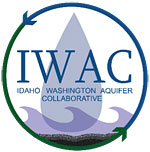A Primer on the Interstate Allocation of Water in Idaho and Washington
September 8, 2015,
Christopher H. Meyer, Esq.,
Givens Pursley, LLC.
Overview: State and federal water law is designed, by and large, to allocate and administer water rights within state boundaries. A separate body of law governs the allocation of water between states.
If you imagine a water resource common to two states as a pie, interstate allocation divides that pie into two pieces. Each state, in turn, allocates its portion of the pie to individual water users within the state. In other words, interstate allocation of water, by and large, operates at the macro level. With some exceptions discussed below, it addresses disputes between states, not disputes between individual water users located in different states.
The effect of an interstate allocation of water is to require one state (typically the upstream or up-gradient state) to deliver water on an aggregate basis to the neighboring state. In order to meet this obligation, the upstream state may have to curtail uses of that water within that state. Which individual users are curtailed in order to meet the upstream state’s obligation to the downstream state is a matter of state law (mostly) within the upstream state. Once the water arrives in the downstream state, the water is allocated according to the rules of allocation within the downstream state. As a result, it is entirely possible that a senior water right in an upstream state could be curtailed, while a junior water right in the downstream state receives its full share.
Macro-level approaches (applicable to states and only indirectly to individual water users) include: (1) Equitable apportionment, (2) Compacts, (3) Congressional allocation and (4) Informal agreements.
Micro-level approaches (directly applicable to individual water users) include: (5) Export restrictions, (6) Interstate water markets and the administration of water rights transferred across state lines, and (7) Private enforcement of priority across state lines. Download the complete document to read about each of these approaches.




